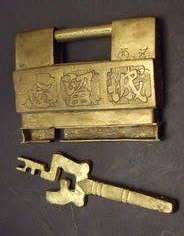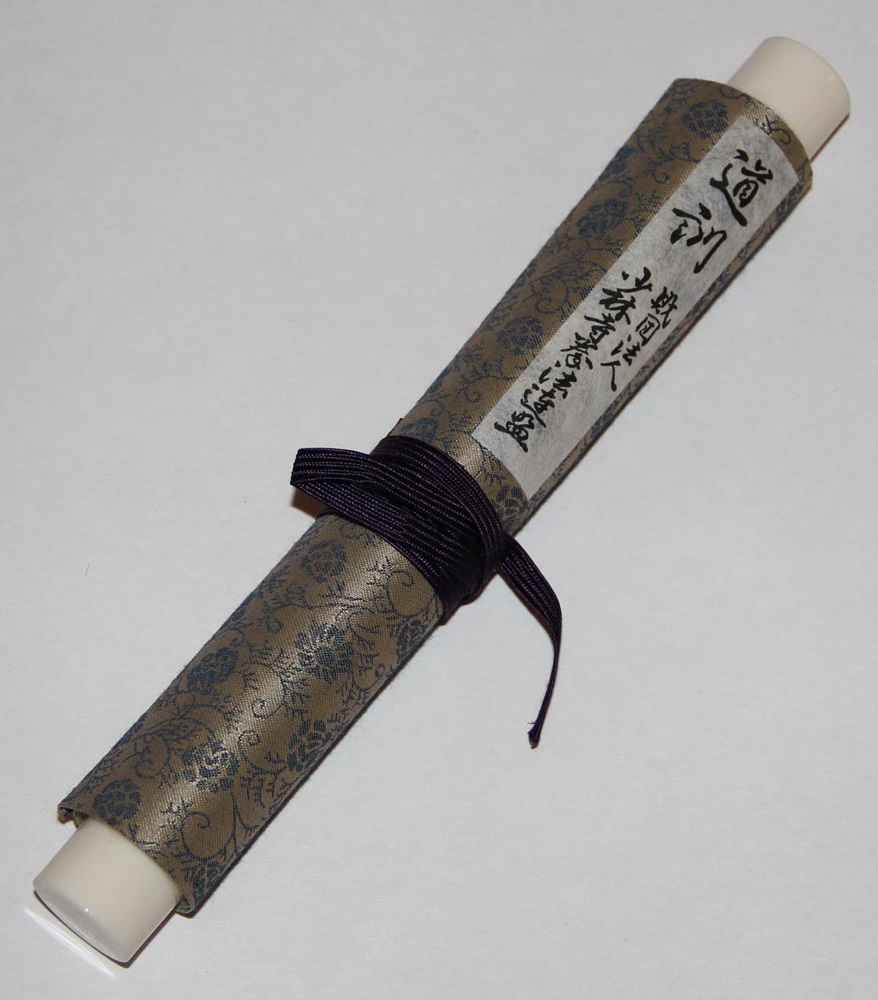Niseishi Description
After bowing and announcing the name of the kata ("Niseishi") ...
Yōi (cross open hands at groin level in
musubi dachi) and kiyomeri kokyū
(purification breaths)
Kamaete is not performed in
this kata.
| 1 | Step back with right foot into hidari han-zenkutsu dachi with hidari-te shotei uke , followed immediately by simultaneou hidari-te osae uke and gyaku-zuki | |
| 2 | Yori-ashi forward in hidari han-zenkutsu dachi with age ude uke to dislocate the opponent's elbow | |
| 3 | Pivoting on the left foot, turn 180 degrees into migi han-zenkutsu dachi with morote zuki | |
| 4 | Yori-ashi forward into migi neko-ashi dachi with kakiwake uke | |
| 5 | Pivoting on the right foot, step 90 degrees left into hidari han-zenkutsu dachi with age uke, followed by jōdan hiji ate | |
| 6 | Pivoting on the left foot, turn 180 degrees right into migi han-zenkutsu dachi with migi jōdan shutō uchi , followed by migi mae-ashi choku geri, landing in migi han-zenkutsu dachi with gyaku-zuki | |
| 7 | Pivoting on the right foot, turn 180 degrees left into hidari han-zenkutsu dachi with hidari jōdan shutō uchi , followed by hidari mae-ashi choku geri, landing in hidari han-zenkutsu dachi with gyaku-zuki | |
| 8 | Draw the left foot back into heikō dachi with morote hikite | |
| 9 | Step 45 degrees right into migi han-zenkutsu dachi with morote shōtei uchi (left hand vertical, right hand horizontal) | |
| 10 | Pivoting on the right foot, turn 180 degrees left into hidari zenkutsu dachi, whilst swinging both arms in semi-circular arcs, the left hand finishing palm-up beside the left thigh and the right hand performing jōdan ura-shutō uchi palm-down, head and body tilted forward | |
| 11 | Slide the left foot forward into heisoku dachi whilst swinging the left hand upward to strike against the palm of the right hand, then step back with the left foot into migi zenkutsu dachi whilst circling both hands at knee height, pulling them up to solar plexus level as if holding a bat or sword handle, then driving them downward together with kiai | |
| 12 | Pivoting on the right foot, turn 180 degrees left into hidari neko-ashi dachi with shutō uke (normal hikite) | |
| 13 | Step forward into han-zenkutsu dachi with jōdan hiji ate and gedan barai, then gyaku-zuki | |
| 14 | Pivot on right foot and turn 45 degrees left into hidari neko-ashi dachi with shutō uke (normal hikite) | |
| 15 | Step forward with the right foot into shiko dachi with migi hiji ate against the palm of the left hand, then slow migi gedan barai, keeping the open left hand at the right elbow | |
| 16 | Turn 45 degrees left into hidari neko-ashi dachi with shutō uke (normal hikite) | |
| 17 | Step forward into han-zenkutsu dachi with jōdan hiji ate and gedan barai, then gyaku-zuki | |
| 18 | Pivoting on the left foot, turn 225 degrees left into hidari han-zenkutsu dachi with morote zuki | |
| 19 | Open both hands and draw them to the left hip whilst drawing the left foot back into heisoku dachi | |
| 20 | Circle both hands clockwise in mawari uke (karami nage) |
Zanshin yame is not performed in Niseishi
Naotte
Rei


 As
with each new kata, it is important to remind
oneself of the adage: "Manabu no tame ni hyakkkai,
jukuren no tame ni senkai, satori no tame ni manga
okonau" (学ぶのために百回、熟練のために千回、悟りのために万回行う.).
A hundred times to learn, a thousand
times for proficiency, ten thousand
repetitions for complete understanding.
A related Okinawan saying is "ichi kata san nen"
(一型三年): one kata
three years. To become truly proficient-to be able to perform it
correctly, and with the speed, power, timing, and bushi damashii (samurai spirit) necessary
to make its techniques effective in a real self-defence
situation will take a thousand repetitions, which
equates to 100 days at ten repetitions a day.
And to fully understand and apply all of its principles,
nuances, and variations will take 1,000 days (three
years) at ten repetitions per day.
As
with each new kata, it is important to remind
oneself of the adage: "Manabu no tame ni hyakkkai,
jukuren no tame ni senkai, satori no tame ni manga
okonau" (学ぶのために百回、熟練のために千回、悟りのために万回行う.).
A hundred times to learn, a thousand
times for proficiency, ten thousand
repetitions for complete understanding.
A related Okinawan saying is "ichi kata san nen"
(一型三年): one kata
three years. To become truly proficient-to be able to perform it
correctly, and with the speed, power, timing, and bushi damashii (samurai spirit) necessary
to make its techniques effective in a real self-defence
situation will take a thousand repetitions, which
equates to 100 days at ten repetitions a day.
And to fully understand and apply all of its principles,
nuances, and variations will take 1,000 days (three
years) at ten repetitions per day.